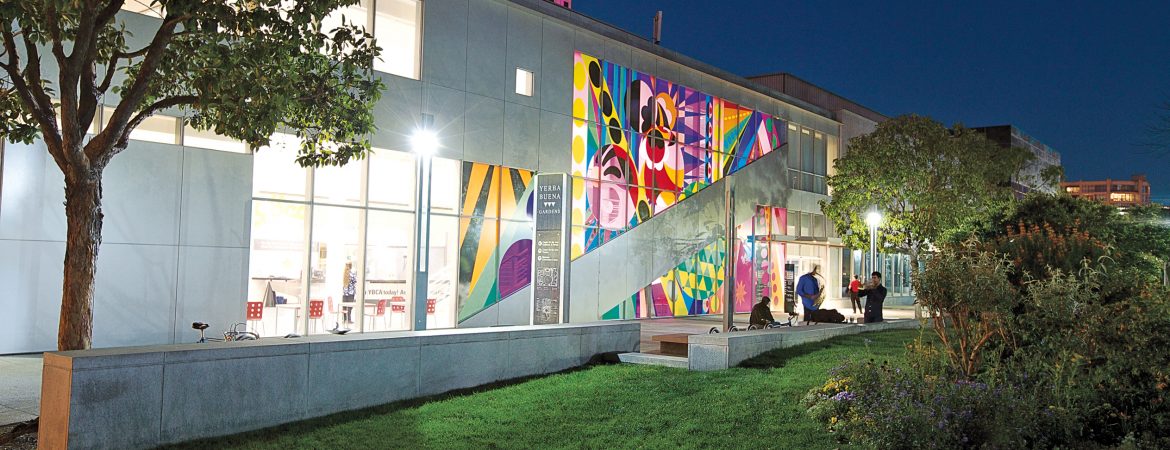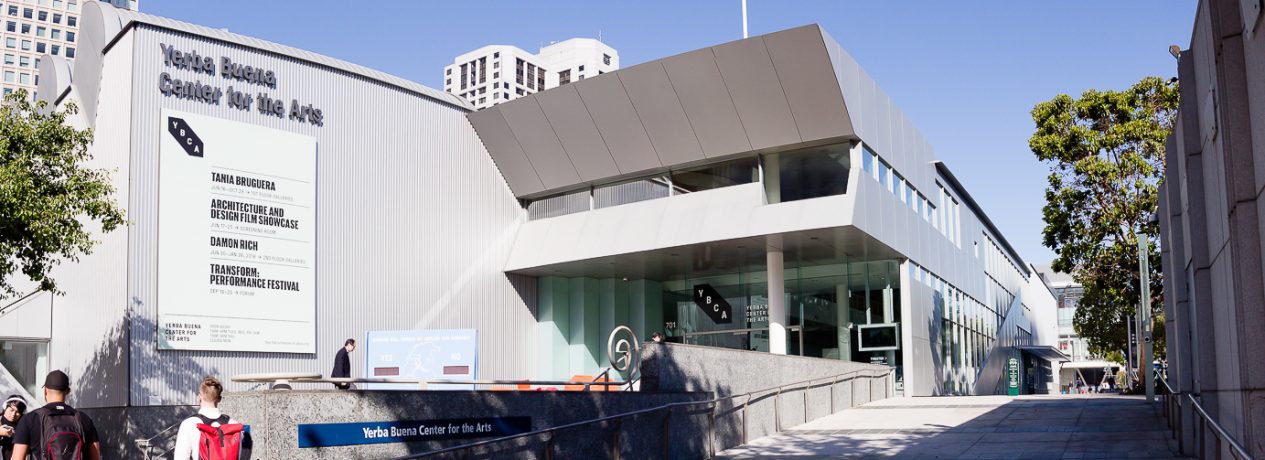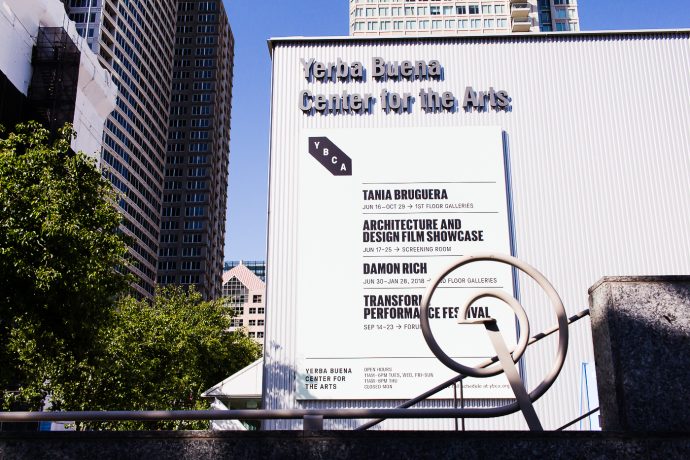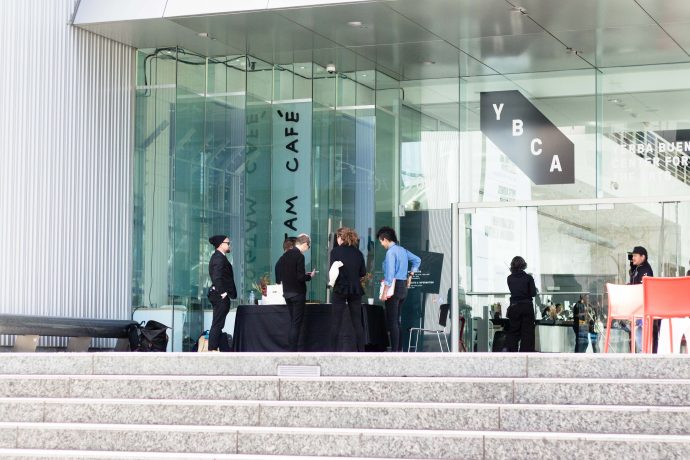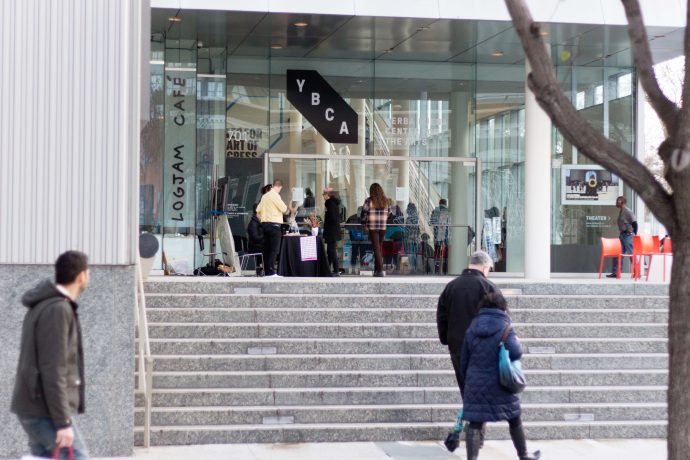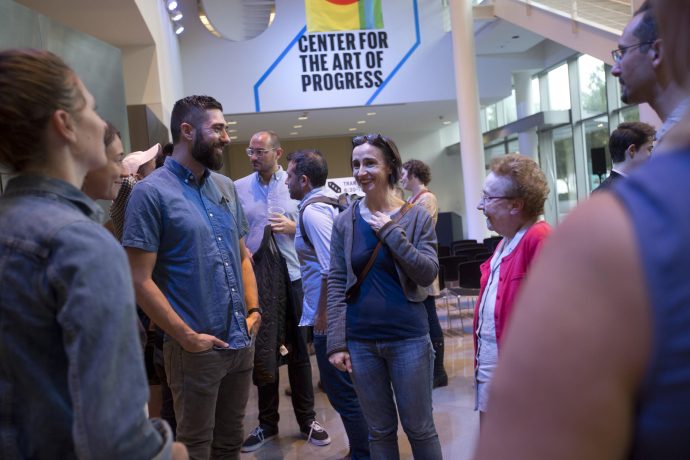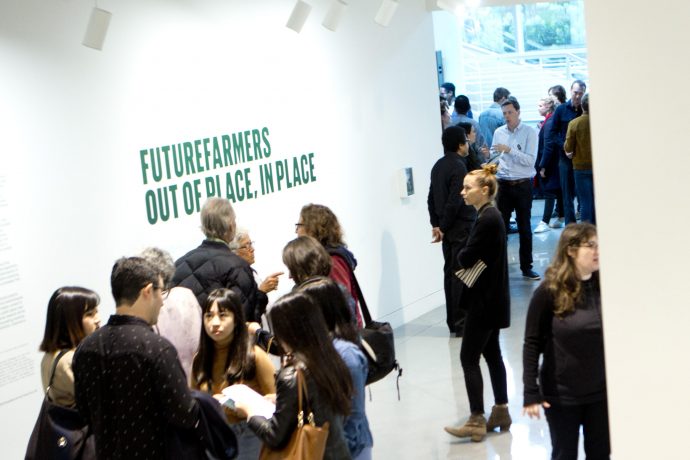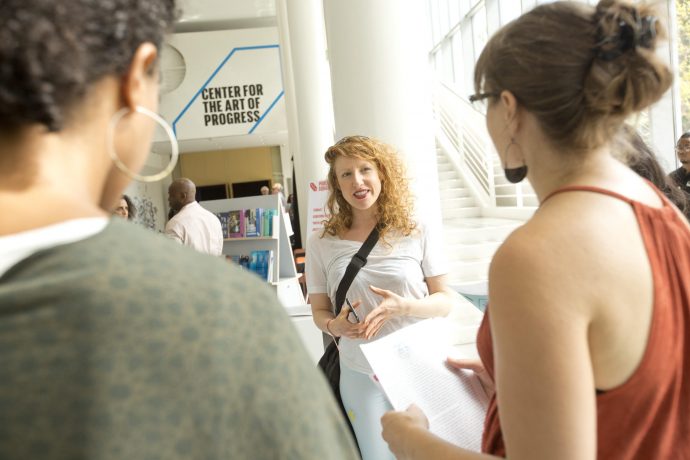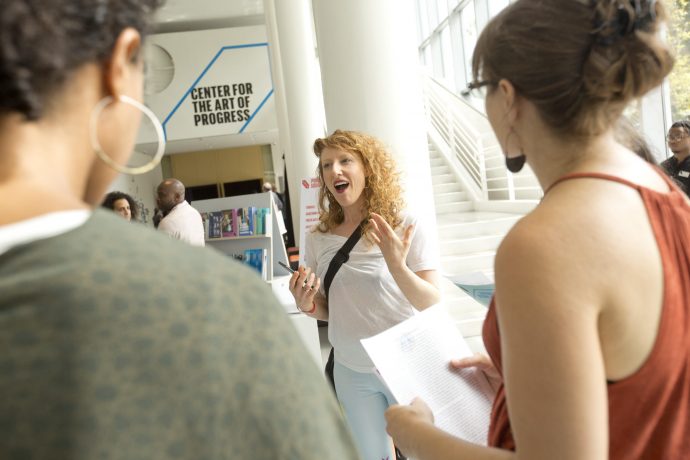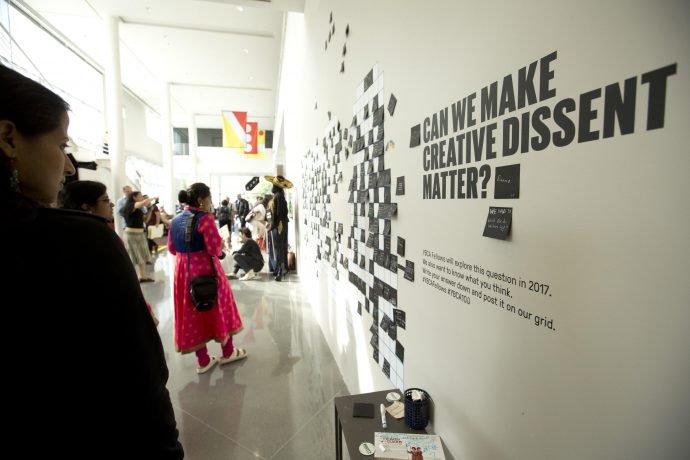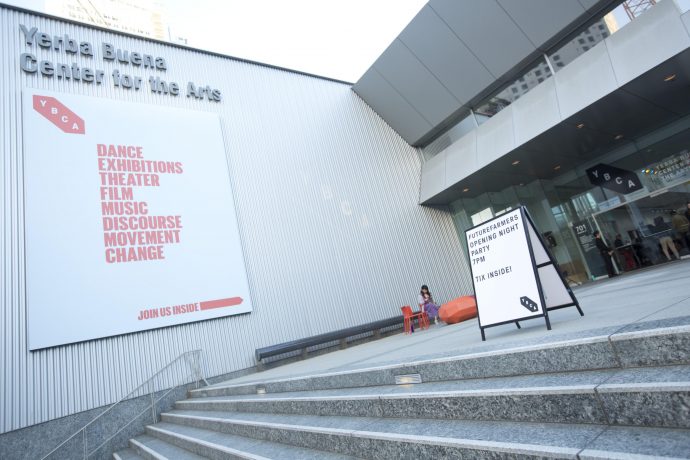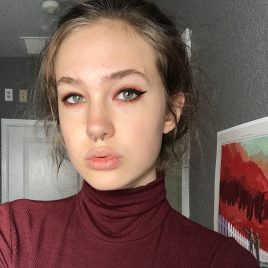San Francisco’s SoMa district is full to the brim with arts institutions, corporate offices, and trendy restaurants. It’s a pretty far cry from the stereotypical images of tourist San Francisco; you can’t see the waterfront, or the bridge.
But its packed with every sort of cultural activity imaginable, from coffee tastings at the legendary Sightglass to escape rooms to audacious contemporary art exhibits at Yerba Buena Center for the Arts. Yerba Buena Center for the Arts, sometimes called YBCA, is solidly distinct from the institutions that surround it, even those dedicated to seemingly similar concepts, such as the Contemporary Jewish Museum or San Francisco Museum of Modern Art. The name refers to both the buildings on-site and the Yerba Buena Gardens next door.
“Museum” isn’t even in the name, both literally and figuratively. YBCA feels much more like a collaborative experience than any other place we’ve been in in the city. It’s non-collecting, meaning that it dedicates all of its space to current projects and doesn’t have to commit any to storage. Something that we think represents the uniqueness of YBCA would be the hexagonal ping-pong table that sits in the lobby of the building, open for anyone to start up a game if they so desire. It’s a communal space, meant to foster conversations between strangers and friends alike.
If you’re not in the mood for table tennis (or, like us, you’re not in the mood for embarrassing yourself with your subpar hand-eye coordination) then you can simply take a seat in one of the many comfortable chairs set up in the lobby and enjoy a panoramic view of Yerba Buena Gardens. The ceiling reaches far above, and the wall reads “CENTER FOR THE ART OF PROGRESS,” outlined in a blue polygon.
Yerba Buena Center for the Arts isn’t just talking the talk here. The art at YBCA is unlike anything you can find at the city’s long-established arts institutions, like the de Young or SFMOMA. Contemporary art at the Center for the Arts is presented in a fresh way, much more than the usual plain gallery walls that accompany the artwork, devoid of context. It’s really the place to go when you’re in pursuit of inspiration, simply because it allows you to think so far outside of the box.
Galleries are often the textbook definition of multi-sensory. There are videos to watch, sounds to listen to, sculptures to examine, and plenty of the sort of artwork you would expect from a regular collecting museum.
Sometimes rap songs are involved, or balloons.

Moreover, they appear to embrace the full definition of “art” as something much more than something experienced in a gallery; live music, dance and film exhibitions are frequently featured as part of their lineup. YBCA seems to specifically seek out unique perspectives on their art, with an eye towards those in the Bay Area.
As proof of their dedication to their home town, YBCA’s running triennial, Bay Area Now, chooses a group of 20-or-so local photographers, painters, sculptors, architects, and other visual artists to be featured in a large exhibition of their portfolios. There’s an entire curatorial team dedicated to selecting this team, and the process takes months. The architecture of the building lends itself well to the different mediums that it seeks to highlight. It’s split into two, connected by a courtyard. The branch that contains the galleries and the forum was designed in 1993 by Japan’s Fumihiko Maki, who is currently working on New York’s United Nations expansion and Yokohama’s new city hall. On the other hand, the performance hall was conceived in the same year by James Polshek and Todd Schliemann, both from Ennead Architects and with robust portfolios.
Each of these spaces has a remarkably distinct feel to it, constructed to be both practical locations for the display of art and as art in and of themselves. We found the theatre to have an especially clever design. At first glance, it appears to be like any other performance hall, one that can be found in any mid-sized public high school. But as you observe further, you begin to notice the smaller details. There are well-placed splashes of brilliant yellow throughout the room. Up on the walls are box seats which in theory call to mind European opera houses, but look so modernist in this context that it hardly feels the same. YBCA also engages in all sorts of community creativity building, outside Yerba Buena’s front doors, so you know your ticket money is going to a great cause.
Among these initiatives includes developing arts curriculums for underserved schools in San Francisco; another provides fruits and vegetables to residents of the Tenderloin, a veritable food desert in the city of a hundred farmers markets. YBCA even functions as a polling location once election day rolls around.
Yerba Buena Center for the Arts is, fittingly enough, adjacent to Yerba Buena Gardens. It’s pretty much an extension of the building, with just-as-edgy public art for everyone to enjoy. The eclectic selection of installations includes the hull of a glass ship emerging from the ground, a memorial to Martin Luther King Jr., and an interactive robotic sculpture that follows your movements.
We particularly like these features because they—like everything else we’ve mentioned here, really—represent some key parts of San Francisco. The ship belongs to the bay, the robot to the tech innovation that the city is known for. A section of the park serves as a tribute to the Ohlone tribe of Native Americans, who called San Francisco home long before anyone else. It is truly a crash-course of culture and history, one unique to this time and place.
In any case, San Francisco is home to plenty of wonderful parks, like Golden Gate and Land’s End. But no other place better fits SoMa’s vibe than Yerba Buena Gardens. Rising around the green space are the lofty houses of San Francisco industry, office buildings are architectural masterworks of glass and steel.
There are few places we can honestly suggest more for any culture maven visiting the Bay Area than Yerba Buena Center for the Arts. It has everything you could possibly want: completely unique artwork, plenty space for contemplation, and an aura that could only exist in San Francisco.
